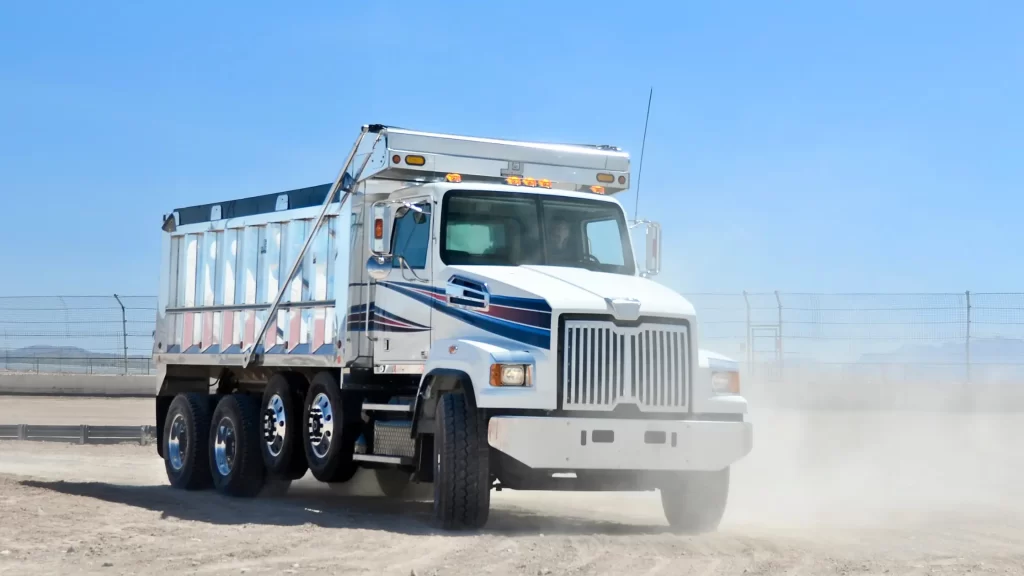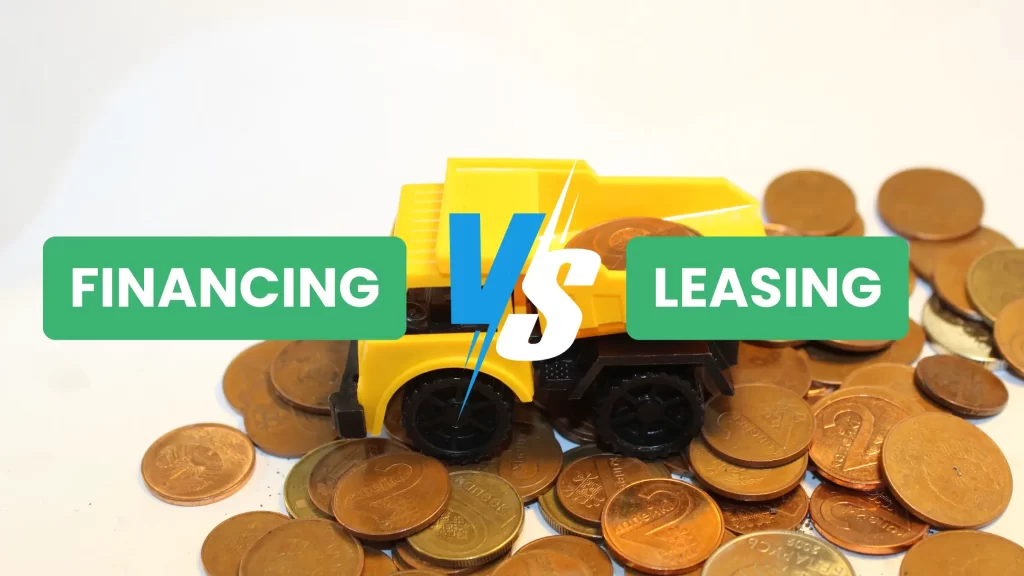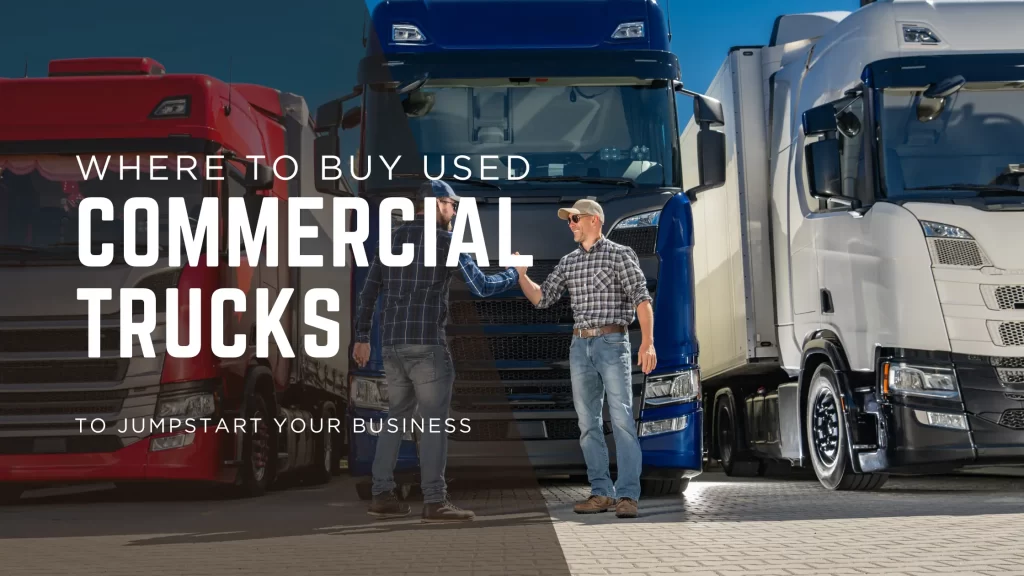Finance Your Dump Truck With The Right Lender
Bank loans are hard to get approved for. We build relationships with commercial lending partners who are looking to fund businesses like yours.
- 100% Guaranteed Equipment Lenders
- Easy Online Process
- Financing, Leasing & Multiple Loan Options

Dump Truck Financing- Funding A Dump Truck For Your Business
From understanding your options to preparing your application and securing the best deal, we’ll equip you with the knowledge to make an informed decision.

Understanding Dump Truck Financing Options
Traditional bank loans
Traditional bank loans are a common financing option for dump trucks. These loans typically offer competitive interest rates and longer repayment terms, making them attractive for established businesses with good credit scores.
Key features of traditional bank loans:
-
Lower interest rates compared to other options
-
Longer repayment terms (usually 3-7 years)
-
Require good credit score and financial history
-
May need collateral (often the dump truck itself)
| Pros | Cons |
|---|---|
| Lower interest rates | Strict qualification criteria |
| Longer repayment terms | Lengthy approval process |
| Build business credit | May require collateral |
| Potential tax benefits | Limited flexibility |
Equipment leasing
Equipment leasing is an alternative to purchasing a dump truck outright. This option allows businesses to use the truck for a set period while making regular payments.
Types of equipment leases:
-
Operating lease: Short-term, lower payments
-
Finance lease: Longer-term, option to purchase at end of lease
-
Sale-leaseback: Sell your current truck and lease it back
Specialized lender financing
Specialized lenders focus specifically on construction equipment financing, including dump trucks. They often have more flexible terms and a deeper understanding of the industry.
Advantages of specialized lenders:
-
Industry-specific expertise
-
Faster approval process
-
More flexible credit requirements
-
Tailored financing solutions
Government-backed loan programs
Government-backed programs, such as SBA loans, can provide favorable terms for small businesses looking to finance dump trucks.
Popular government-backed programs:
-
SBA 7(a) loans
-
CDC/504 loans
-
USDA Business & Industry loans
These programs often offer lower down payments and longer repayment terms, making them attractive for businesses that may not qualify for traditional bank loans.
Now that we’ve explored various financing options, let’s delve into the benefits of financing your dump truck in the next section.
Benefits of Financing Your Dump Truck

Preserving working capital
Financing your dump truck offers a significant advantage in preserving your working capital. By opting for financing, you can keep more cash on hand for other essential business operations. This financial flexibility allows you to:
-
Cover unexpected expenses
-
Invest in marketing and business growth
-
Maintain a healthy cash flow
Here’s a comparison of how financing impacts your working capital:
| Aspect | Financing | Buying Outright |
|---|---|---|
| Initial cash outlay | Low | High |
| Available working capital | High | Low |
| Financial flexibility | Increased | Decreased |
Tax advantages
Financing your dump truck can provide several tax benefits:
-
Deductible interest payments
-
Depreciation write-offs
-
Potential Section 179 deductions
These tax advantages can significantly reduce your overall tax liability, making financing an attractive option for many businesses.
Flexible payment terms
Dump truck financing often comes with flexible payment terms, allowing you to:
-
Choose between fixed or variable interest rates
-
Select payment schedules that align with your cash flow
-
Opt for seasonal payments if your business has cyclical income
This flexibility ensures that your loan payments are manageable and tailored to your specific business needs.
Opportunity for fleet expansion
Financing enables you to expand your fleet more rapidly than buying outright. By spreading the cost over time, you can:
-
Acquire multiple vehicles simultaneously
-
Take on larger projects
-
Increase your revenue potential
This growth opportunity can significantly boost your business’s capacity and profitability in the long run.
Now that we’ve explored the benefits of financing your dump truck, let’s examine the factors that can affect your financing rates.
Factors Affecting Dump Truck Financing Rates

Credit score and history
Your credit score and history play a crucial role in determining your dump truck financing rates.
Lenders use these factors to assess your creditworthiness and the risk associated with lending to you.
A higher credit score typically results in more favorable interest rates and terms.
| Credit Score Range | Impact on Financing Rates |
|---|---|
| 750+ | Excellent rates, best terms |
| 700-749 | Good rates, favorable terms |
| 650-699 | Average rates, standard terms |
| 600-649 | Higher rates, stricter terms |
| Below 600 | Highest rates, limited options |
Down payment amount
The size of your down payment can significantly influence your financing rates. A larger down payment:
-
Reduces the lender’s risk
-
May lead to lower interest rates
-
Can result in smaller monthly payments
-
Demonstrates your commitment to the investment
Length of loan term
The duration of your loan term affects both your monthly payments and overall interest paid:
-
Shorter terms: Higher monthly payments, less total interest
-
Longer terms: Lower monthly payments, more total interest
Age and condition of the truck
The dump truck’s age and condition impact financing rates because they affect the vehicle’s value and potential lifespan:
-
Newer trucks: Generally lower rates, longer terms available
-
Older trucks: Higher rates, shorter terms, may require additional documentation
Current market conditions
Economic factors and industry trends can influence dump truck financing rates:
-
Interest rate environment
-
Supply and demand for dump trucks
-
Construction industry outlook
-
Overall economic conditions
These factors collectively determine the risk level for lenders and, consequently, the rates they offer for dump truck financing.
Preparing for the Financing Application

Gathering necessary documents
Before applying for dump truck financing, it’s crucial to have all your paperwork in order. Here’s a list of essential documents you’ll need:
-
Business and personal tax returns (last 2-3 years)
-
Bank statements (last 3-6 months)
-
Financial statements (balance sheet and income statement)
-
Driver’s license and CDL (Commercial Driver’s License)
-
Proof of insurance
-
Business registration and licenses
Improving credit score
A higher credit score can significantly improve your chances of securing favorable financing terms. Consider these steps:
-
Check your credit report for errors
-
Pay down existing debts
-
Make all payments on time
-
Keep credit utilization below 30%
-
Avoid applying for new credit before seeking financing
Researching lenders
Not all lenders are created equal when it comes to dump truck financing. Here’s a comparison of different lender types:
| Lender Type | Pros | Cons |
|---|---|---|
| Banks | Lower interest rates, established relationships | Stricter requirements, longer approval process |
| Online lenders | Quick approval, flexible terms | Potentially higher rates, less personal service |
| Equipment dealers | Specialized knowledge, possible promotions | Limited to specific brands, potentially higher rates |
Creating a business plan
A solid business plan demonstrates your commitment and helps lenders assess your ability to repay the loan. Include these key elements:
-
Executive summary
-
Company description
-
Market analysis
-
Financial projections
-
Marketing strategy
-
Operational plan
With these preparations complete, you’ll be well-positioned to approach lenders and discuss your dump truck financing options.
The next step is to compare different financing offers and terms to find the best deal for your business.
Comparing Financing vs. Buying Outright

Initial costs and long-term expenses
When comparing financing to buying a dump truck outright, it’s crucial to consider both initial costs and long-term expenses. Let’s break down the key differences:
| Aspect | Financing | Buying Outright |
|---|---|---|
| Initial Cost | Lower upfront payment | High initial investment |
| Monthly Expenses | Regular payments | No ongoing payments |
| Interest | Additional cost over time | No interest charges |
| Tax Benefits | Potential deductions on interest | Depreciation write-offs |
While financing allows for a lower initial investment, it’s important to factor in the total cost over time, including interest.
Buying outright requires a significant upfront investment but eliminates ongoing payments.
Flexibility and upgrades
Financing offers greater flexibility in terms of:
-
Accessing newer models more frequently
-
Easier upgrades as technology improves
-
Potential for better fuel efficiency and reduced maintenance costs
Buying outright, however, provides:
-
Full control over the asset
-
No restrictions on modifications or usage
Ownership and depreciation
Ownership dynamics differ significantly between financing and buying:
-
Financed trucks: Gradual ownership buildup
-
Purchased trucks: Immediate full ownership
Depreciation impacts both options:
-
Financed trucks: Depreciation may outpace equity buildup
-
Purchased trucks: Full depreciation benefits, but faster value decrease
Maintenance responsibilities
Maintenance considerations vary based on the acquisition method:
-
Financed trucks: May include maintenance packages
-
Purchased trucks: Full responsibility for all repairs and maintenance
Now that we’ve examined the key differences between financing and buying outright, let’s explore some tips for securing the best financing deal for your dump truck.
Tips for Securing the Best Financing Deal

Shopping around for rates
When seeking dump truck financing, it’s crucial to compare offers from multiple lenders.
Don’t settle for the first option you come across. Instead, create a comparison table to evaluate different lenders:
| Lender | Interest Rate | Term Length | Down Payment | Additional Fees |
|---|---|---|---|---|
| Lender A | 5.5% | 60 months | 10% | $500 origination |
| Lender B | 6.0% | 72 months | 15% | No fees |
| Lender C | 5.8% | 48 months | 20% | $250 processing |
Negotiating terms
Once you’ve identified potential lenders, it’s time to negotiate. Here are key points to consider:
-
Interest rate
-
Loan term
-
Down payment amount
-
Prepayment penalties
-
Collateral requirements
Understanding the fine print
Before signing any agreement, carefully review the contract. Pay attention to:
-
Late payment fees
-
Default clauses
-
Insurance requirements
-
Maintenance obligations
Considering seasonal payment options
For businesses with fluctuating income, explore flexible payment structures:
-
Skip-payment options during slow months
-
Balloon payments at the end of busy seasons
-
Graduated payment plans that increase over time
Exploring manufacturer financing programs
Many dump truck manufacturers offer their own financing options. These programs often come with:
-
Competitive rates
-
Special promotions for new models
-
Bundled maintenance packages
-
Extended warranties
By following these tips, you’ll be better positioned to secure a financing deal that aligns with your business needs and financial goals.
Remember, the right financing can significantly impact your dump truck investment’s long-term profitability.
Top Dump Truck Manufacturers

In the world of dump trucks, three giants stand tall above the rest, each bringing its unique strengths to the table. From American innovation to Japanese precision and Scandinavian reliability, these manufacturers have been shaping the landscape—quite literally—for decades.
1. 
Unmatched Payload Capacity
Caterpillar’s dump trucks are renowned for their exceptional payload capacity, setting industry standards. Their flagship models can haul up to 400 tons in a single trip, significantly boosting productivity on job sites. This impressive capacity is achieved through:
-
Advanced weight distribution systems
-
High-strength materials for lighter yet durable construction
-
Innovative suspension design for stability under heavy loads
Fuel Efficiency Technologies
Caterpillar leads in fuel-efficient dump truck technology, incorporating cutting-edge features to reduce operational costs and environmental impact. Their EcoMode system optimizes engine performance, while regenerative braking recovers energy during deceleration.
2. 
Cutting-Edge Autonomous Systems
Komatsu’s commitment to innovation shines through their advanced autonomous systems. These cutting-edge technologies enhance:
-
Safety: Reducing human error and accidents
-
Efficiency: Optimizing routes and fuel consumption
-
Productivity: Operating 24/7 without fatigue
Eco-Friendly Designs
Komatsu’s eco-conscious approach is evident in their dump truck designs. They focus on:
-
Reduced emissions
-
Improved fuel efficiency
-
Use of sustainable materials
These efforts not only benefit the environment but also reduce operational costs for businesses.
3. 
Ergonomic Cab Designs for Operator Comfort
Volvo’s commitment to operator well-being shines through in their ergonomic cab designs. Key features include:
-
Adjustable seats with lumbar support
-
Intuitive control layouts
-
Noise reduction technology
-
Climate control systems
Intelligent Load Sensing Hydraulics
Volvo’s intelligent hydraulics optimize performance and fuel efficiency. The system adapts to load weight, ensuring smooth operation and reducing strain on components. This technology contributes to increased productivity and lower operating costs for dump truck operators.
 Commercial Truck Trader is a comprehensive online platform for buying and selling commercial vehicles. This guide covers the essentials of using the website, including navigation, buying and selling processes, vehicle types, valuation, financing, and inspection. Whether you’re a first-time buyer or an experienced fleet manager, Commercial Truck Trader offers valuable tools and resources for your commercial vehicle needs
Commercial Truck Trader is a comprehensive online platform for buying and selling commercial vehicles. This guide covers the essentials of using the website, including navigation, buying and selling processes, vehicle types, valuation, financing, and inspection. Whether you’re a first-time buyer or an experienced fleet manager, Commercial Truck Trader offers valuable tools and resources for your commercial vehicle needs
Truckpaper.com
![]() Truckpaper.com is a leading online marketplace for buying and selling trucks and heavy equipment. It connects buyers and sellers from all over the world. With a vast inventory and user-friendly interface, finding the right vehicle has never been easier. In this blog post, we’ll explore the unique features of Truckpaper.com. We’ll also highlight tips to maximize your experience on this platform. Whether you’re a dealer or a private seller, this guide is for you.
Truckpaper.com is a leading online marketplace for buying and selling trucks and heavy equipment. It connects buyers and sellers from all over the world. With a vast inventory and user-friendly interface, finding the right vehicle has never been easier. In this blog post, we’ll explore the unique features of Truckpaper.com. We’ll also highlight tips to maximize your experience on this platform. Whether you’re a dealer or a private seller, this guide is for you.
![]() IronPlanet has transformed the heavy equipment auction industry by providing a digital platform that connects buyers and sellers worldwide. Through its innovative approach, comprehensive inspection program, and user-friendly interface, IronPlanet offers a reliable and efficient marketplace for construction, agricultural, and transportation equipment.
IronPlanet has transformed the heavy equipment auction industry by providing a digital platform that connects buyers and sellers worldwide. Through its innovative approach, comprehensive inspection program, and user-friendly interface, IronPlanet offers a reliable and efficient marketplace for construction, agricultural, and transportation equipment.



